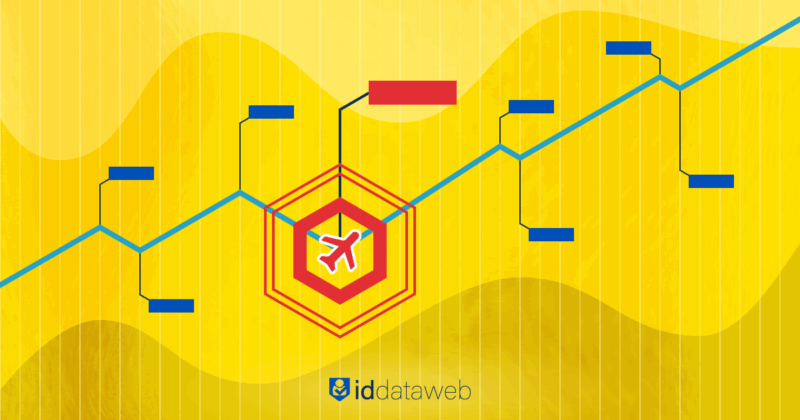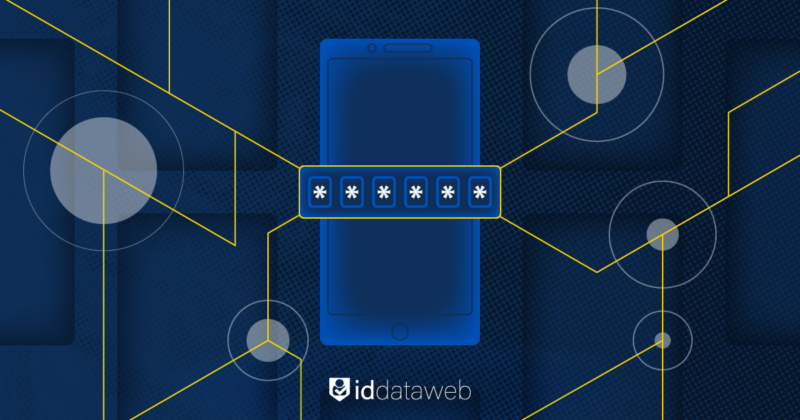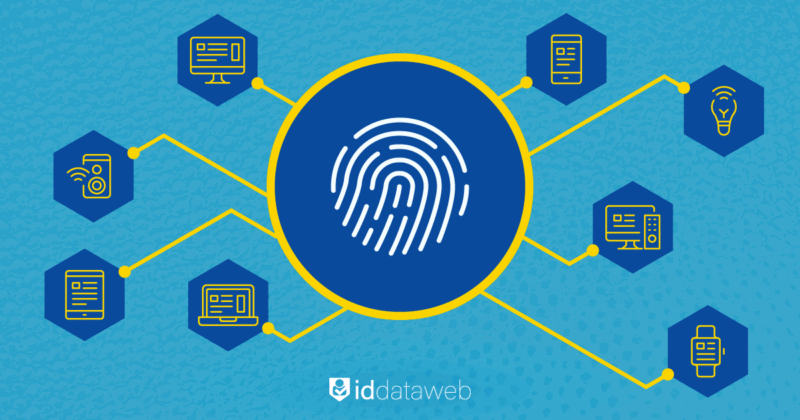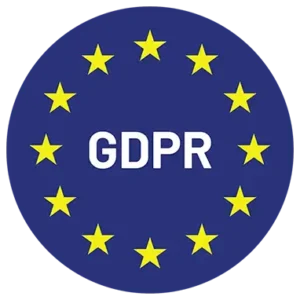Airlines operate at the intersection of the security vs convenience dilemma. Passengers expect rapid check-ins and simple digital experiences. Security teams, however, need oversight of digital identities to defend against attacks.
In 2025, identity security is paramount for airlines: criminals target loyalty programs, booking systems, and passenger manifests, lured by the high value of personal and financial data.
Organized groups use stolen credentials and forged documents. State-sponsored hackers bypass basic protocols. Even insiders can compromise networks. The International Air Transport Association (IATA) estimates that airlines lose at least one billion dollars annually to payment fraud.
Many carriers already invest substantially in airport hardware, advanced booking portals, and big data analytics. Yet, identity and access management (IAM) are often a weak link.
This piece examines the most pressing identity-related challenges for carriers and highlights how layered security—particularly identity orchestration—helps mitigate these threats. We will cover real-life scenarios, regulatory pressures, technological trends, and insider threats. Along the way, we will examine broader context, exploring why these challenges persist despite growing awareness of digital risk.
Verifying passenger identities
Passenger identity verification is fundamental to airline operations. It’s necessary for compliance with immigration rules and airline safety obligations.
Traditionally, passport checks and manual document inspection at check-in or the boarding gate served as mainstays of passenger vetting. In recent years, digitized approaches have emerged, including automated gates, biometric facial recognition, and advanced ID scanning.
In 2025, many carriers are employing or testing biometrics to speed passengers through security bottlenecks. Passengers appreciate the promise of faster lines and safer identity validation. Nevertheless, a single exploitation—like a misconfiguration in an ID-matching system—can lead to unauthorized travelers boarding international flights undetected. The direct and indirect costs (fines, re-routing costs, negative media coverage) make passenger ID verification one of the foremost identity challenges.
Frequent-flyer program fraud
Airline loyalty programs – frequent-flyer miles and points – have become prime targets for fraud.
These programs are effectively digital currencies, and loyalty databases often lack some of the stringent anti-fraud measures we see in banking systems. Attackers can hijack frequent-flyer accounts using stolen usernames and passwords or by exploiting software weaknesses.
Account Takeovers (ATO): Hackers use credential stuffing and phishing to break into customer loyalty accounts. With billions of leaked credentials available, attackers easily test username-password pairs to hijack frequent-flyer profiles and steal miles. Industry research shows airline account takeovers rose ~30-40% recently amid a surge in bot attacks
Case – insider abuse: Not all loyalty fraud is external. A 2024 investigation found two contractors for Qantas Airways abused access to divert frequent-flyer points from about 800 customer accounts into their own. The scheme, which involved unauthorized changes to bookings, highlights internal vulnerabilities. Qantas responded swiftly, apologizing and restoring points, but the incident underscores that even trusted partners can exploit systemic gaps.
Impact and ROI considerations: Frequent-flyer fraud hits the bottom line: stolen miles must be compensated (3% of loyalty points value is lost to fraud on average), and responding to incidents incurs support costs. More critically, publicized breaches damage brand loyalty. For executives, investing in identity security here clearly pays off – every dollar spent to prevent account takeovers and fraud saves many more in fraud losses and retains customer loyalty. Techniques like multi-factor authentication (MFA) for account logins, anomaly detection, and fraud monitoring on loyalty transactions are now essential.
Booking and chargeback fraud
Booking fraud – the purchase of airline tickets using stolen identities or payment details – continues to plague carriers.
Attackers use stolen credit cards, synthetic IDs, or “friendly fraud” techniques (where individuals dispute legitimate charges) to acquire flight tickets at no cost. Airlines shoulder the bulk of the financial liability—when a cardholder spots an unauthorized charge, a chargeback process begins. The airline not only loses the ticket revenue but also pays associated chargeback fees.
Stolen credit cards & chargebacks: Criminal networks frequently use stolen or fake credit card details to buy airline tickets. Airlines then face chargebacks, losing both the fare and paying additional fees. Europol reports that organized crime groups exploit online booking systems at scale; in one global crackdown, 79 suspects were detained for traveling on fraudulently purchased tickets with stolen cards.
Synthetic identities & fake travel agencies: Some attackers create synthetic identities (blending real and fake info) to evade automated fraud checks when booking. Others pose as online travel agents, selling cheap tickets bought with stolen data – leaving airlines carrying the liability.
Scale of losses: Payment fraud in air travel is widespread and growing. IATA estimates airlines lose about 1.2% of their online revenue to payment fraud. Notably, this figure doesn’t even include fraud in related areas like loyalty programs, meaning total identity-related fraud costs are even higher. For an airline, 1-2% of revenue can equal the margin on many flights, directly affecting profitability.
Mitigation & business benefits: To combat ticketing fraud, airlines in Europe have adopted Strong Customer Authentication under PSD2 (requiring two-factor verification for online payments) – early results show significant fraud reduction in card purchases. Many carriers also leverage fraud scoring and identity proofing at booking (flagging mismatches in names, emails, or device reputation). The ROI here is clear: preventing one large fraudulent booking can pay for a fraud detection tool’s cost for months. Additionally, less fraud means airlines avoid stricter scrutiny or fines from payment processors. From an operational standpoint, stopping fraudulent bookings also averts last-minute disruptions (e.g. discovering a fake booking at the gate).
In short, robust identity validation in ticket sales protects revenue and ensures seats are occupied by legitimate customers.
Workforce and contractor identity management challenges
An often-underestimated threat comes from within: airline employees, contractors, and partners with access to sensitive systems. Managing and monitoring identities across a large, distributed workforce (including outsourced staff) is a complex challenge in 2025:
Insider threats on the rise: Recent surveys indicate a sharp rise in insider-driven cyber threats at critical infrastructure organizations, including airlines. 77% of U.S. national infrastructure orgs (including aviation and transport) saw more insider cyber threats over the past three years. Economic stresses can motivate insider incidents – for instance, 30% of aviation companies expect an upsurge in internal cybercrime during financial downturns, highlighting the “pressure” component within the fraud triangle. Whether through malice or negligence, insiders can exploit their authorized access in ways outsiders cannot.
Case – misconfigured access leading to breach: In 2022, Turkey’s Pegasus Airlines suffered a massive data leak when an internal IT misconfiguration left 6.5 terabytes of sensitive data exposed online. The breach, caused by an unsecured employee-accessible cloud storage bucket, exposed flight operations data, staff information, and even plain-text passwords – a goldmine for attackers. This incident underscores how poor identity and access management (IAM) practices (e.g. lack of access control or oversight) can lead to systemic failure. It wasn’t an external hack, but an insider error, illustrating that security is only as strong as the weakest access point.
IAM best Practices & rOI: Addressing workforce identity challenges involves stricter access controls, least-privilege policies, and continuous monitoring of user activity. In 2023, the U.S. TSA issued new cyber directives for airlines and airports requiring measures like network segmentation and access control to prevent unauthorized access to critical systems. For airline executives, funding strong internal IAM and insider threat programs yields clear returns: it averts costly breaches, prevents operational disruptions (e.g., an insider disabling a system could delay flights), and ensures regulatory compliance. Fundamentally, secure workforce identity management protects the airline’s “crown jewels” – from passenger data to flight control systems – against both malicious insiders and external actors using stolen insider credentials.
Changing regulatory landscape for identity security
Airlines in North America and Europe increasingly find themselves subject to stringent cybersecurity regulations, partly because aviation is viewed as critical infrastructure. Cyberattacks on airlines threaten not just corporate data but also passenger safety and broader economic stability.
Regulators, aware of these risks, have enacted detailed frameworks that require airlines to harden their networks and report breaches within strict timelines. Airlines must navigate these rules or face penalties, but compliance investments also drive improvements that reduce risks:
EU’s NIS2 directive: In Europe, the NIS2 Directive (effective late 2024) now classifies airlines and airports as essential services subject to rigorous cybersecurity rules IS2 mandates that airlines implement risk-based security measures (including access controls, incident response plans) and report breaches within 24 hours, with hefty fines for non-compliance. This regulatory push is compelling European carriers to bolster identity verification processes and tighten access management – not just to avoid fines, but to ensure they can demonstrably prevent and respond to attacks.
US initiatives: In the U.S., while regulations are often sector-specific, the government is moving toward more enforceable guidelines for aviation cybersecurity. TSA’s 2023 cybersecurity directives for airlines (emergency amendments) explicitly require controls like MFA, system monitoring, and incident reporting in the aviation sector. Additionally, the White House’s National Cybersecurity Strategy advocates for regulated security standards in critical industries, which likely foreshadows more formal rules for airlines.
Data protection and privacy Laws: Regulations like GDPR also come into play. A well-known example is British Airways’ £20M fine by the UK ICO for a 2018 breach that exposed customer personal data. Regulators cited failure to secure login and payment details as the reason. The message is clear: inadequate identity and data protection can carry multi-million-dollar penalties. Likewise, privacy authorities in Europe scrutinize biometric boarding programs to ensure they don’t violate data rights – meaning airlines must implement these innovations carefully.
Regulatory ROI: Complying with these regulations often produces tangible security gains. When airlines implement mandated MFA, they immediately reduce the risk of account breaches. Meeting PSD2’s payment security rules in the EU drastically cut online ticket fraud rates by requiring customer identity confirmation. Executives can view regulatory compliance costs as investments that preempt incidents far more damaging to the bottom line. In essence, aligning with emerging regulations on identity security helps airlines stay ahead of attackers and avoid legal penalties, protecting both their operations and their balance sheets.
Identity orchestration as a defense
To tackle the multifaceted identity threats above, large enterprises including airlines are increasingly turning to identity orchestration – a layered approach that integrates various identity and fraud prevention tools into a cohesive defense. Rather than relying on a single system, orchestration allows dynamic, adaptive identity verification across the customer journey and employee access lifecycle:
Layered, adaptive security: Identity orchestration platforms act as a control plane uniting disparate identity systems. For an airline, this can meaning combining advanced document checks, biometric authentication, loyalty account security, and workforce single sign-on under one framework.
A platform like ID Dataweb can stitch together signals from multiple sources (device intelligence, watchlists, document scanning, etc.) in real time. If a login seems suspicious (e.g., a customer account access from a new device with high risk), the orchestration engine can trigger additional verification steps (like MFA or a security question) in real time. These adaptive workflows weed out fraudulent users without derailing legitimate ones
This layered model is crucial given the wide range of attacker tactics – no single checkpoint is foolproof, but multiple layers significantly raise the bar for attackers.
Unified view of identity risk: Through orchestration, carriers gain a holistic risk evaluation of every identity-related event. Signals from ID Dataweb’s aggregator model—like mobile network data, threat databases, and real-time device reputation—flow into one dashboard. This unified perspective helps detect complex fraud that siloed systems might overlook. For instance, if an online check-in attempt uses mismatched passport info and a flagged IP address, ID Dataweb’s orchestration layer can route that passenger for manual review before they ever reach the gate.
Minimal user experience vs security trade-off: One challenge in security is balancing strict controls with customer convenience – especially for VIP travelers and frequent flyers. Orchestration helps here by delivering a seamless experience for legitimate users while challenging the risky ones. UX and application teams can appreciate that this means less friction (and less abandonment) for good customers: e.g., a trusted frequent traveler might speed through verification via biometric match, whereas a first-time flyer from a high-risk geography might undergo extra checks. The result is higher customer satisfaction and stronger fraud defense, which ultimately protects revenue.
Future-proofing security investments: Above all, platforms like ID Dataweb are vendor-agnostic. Airlines can plug in new technologies (e.g., emerging forms of biometric authentication, updated watchlists, next-gen device intelligence) without overhauling their core identity infrastructure. In an industry where attacker methods and regulations across jurisdictions evolve constantly, this flexibility is paramount. It allows carriers to refine defenses—adding or replacing identity checks as needed—to stay one step ahead of fraud trends. Every security dollar goes further, and integration cycles shorten drastically.
Conclusion
Airlines in 2025 operate in an environment where identity is the new security perimeter – protecting it is paramount for safety, trust, and profit. Passenger identity verification, loyalty fraud, ticketing scams, and insider risks are testing the industry’s resilience. however, as we’ve seen, carriers that prioritize robust identity security reap clear rewards: lower fraud losses, compliance with evolving laws, and preservation of operational integrity.












